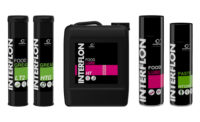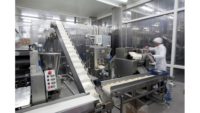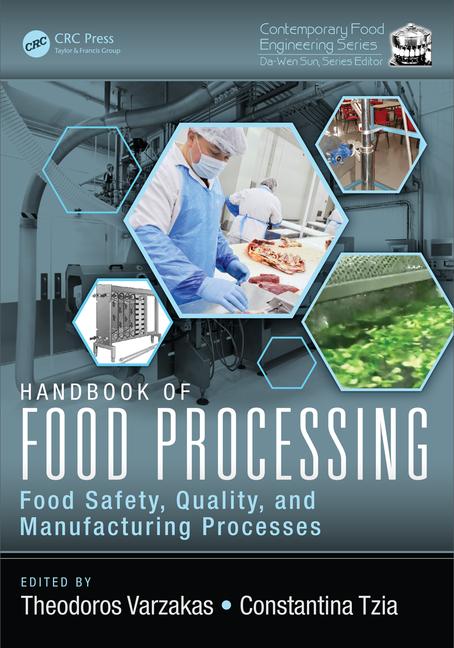By Matthew Gidman
Efficient weight controls and checkweighing systems on bakery production lines are integral to meeting consumer expectations. To ensure compliance with net weight regulations, processors need to identify under or overweight packages.
By deploying smart checkweighers inline and at the end of a production line, processors prioritize and promote food safety, while also protecting their brand integrity. Additionally, weight controls help meet waste reduction targets, contributing to a more sustainable production process.
Global weight regulations are in place to safeguard consumers from receiving products that do not meet the specified weight requirements. If processors are not using “regulatory-approved” weighing systems, or using them incorrectly, it can result in costly penalty fines. Notably, knowingly distributing underweight products in some regions could be deemed fraud.
To avoid litigation issues regarding weight, it is common practice for food plants to overfill packages. Yet, given the cost of ingredients, food commodities and packaging, overfilling is no longer considered a good or sustainable business practice.
Most global weight regulations follow three general rules:
- Average Weights System: The average weight of a product batch must not be below the nominal label weight on the package.
- Tolerable Negative Error (TNE): The proportion of packages falling below the defined error limits should be within a specified level, with no package short by more than twice the domestically defined tolerance table.
- Minimum Weight System: Products are packed according to the declared weight on the label. The weight of the product can be more, but not less than the declared weight. Each packed product is weighed and checked individually for compliance. As a result, this system is used less frequently and may result in higher packing costs.
Tolerance tables vary depending on the product type, packaging and weight. To help processors accommodate these variations, Fortress integrates defined tolerance tables into its Raptor Checkweigher software. This provides instant adherence to the regional legislative weight regulations.
Inline portion control
Leaving weight checks until the final stage of processing could result in an entire consignment of baked goods being over or underweight, costing processors many hours in lost production time and thousands of dollars in wasted product and packaging. For bakery plants especially, inline checkweighing is a valuable part of the entire production process as it factors in how the characteristics of dough—which is a live product—changes minute-by-minute.
Usually connecting to automated dough dividers, if a piece of dough is under or overweight by as little as 0.5 grams, it will automatically be rejected. Digitized software can be utilized to communicate back to the dough divider in real time, instructing it to adjust the position of the blade for the next batch.
Another rationale for inline dough inspection is it allows the dough to further ferment, factoring in changes to the temperature and dough density prior to the proofing stage. This helps to mitigate the risk of a batch being out of tolerance before the baking process.
For example, a loaf may weigh 800 grams when baked, but in its raw state is 917 grams. If it is out of tolerance by just a few grams, dough can overspill and potentially spoil other loaves in the oven. Additionally, if several are overweight in a batch, there will be several underweight loaves too. This inline checkweighing principle can be applied to manage portion control on many processing lines, from pizza dough, to cakes, rolls, and doughnuts.
Free-from formula
Rice flour is a staple ingredient for gluten-free baked products. With a growing demand for gluten-free dietary preferences, the cost of rice flour could see a major increase. Affected by agricultural harvests, which fluctuate depending on seasonal and climate conditions, global shortages can lead to even greater price volatility for bakery products. Consequently, gluten-free products could cost double that of their conventional baked good counterparts.
Maintaining batch-to-batch consistency in free-from and dietary products also requires formulation conformity. The average free-from bread recipe often comprises 20 or more ingredients. Combined with higher prices for specialty gluten-free flour ingredients and starches, this places even greater emphasis on tightly controlling waste and giving away good product.
Inline checkweighing on free-from lines allows for individual pieces that are off target weight to be removed and reworked, as well as providing corrective feedback to the dough divider. Mitigating costly giveaway and targeting operational inefficiencies, the result is a rapid payback on machinery investment.
Design considerations
Although automated food checkweighing is not currently as tightly regulated as HACCP inspection equipment, many processors now recognize the essential role these systems play in their wider quality control programs.
Design and performance should be examined carefully. The most meticulously engineered checkweighing machines can be a solid investment that can virtually eliminate litigation issues and consumer complaints about underweight products, with a quick ROI. They can also significantly reduce product giveaway, identify non-conforming food packs and minimize expensive packaging waste.
For optimal performance, look for these features:
- Fast re-calculations linked to automated tolerance tables
- Airflow covers with cutouts to improve weighing accuracy
- Hygienic Clean-in-Place designs
- Secure RFID user access control
- Modular electronics, enabling seamless integration with inspection, filling and packing equipment
- Dynamic load cell technology to handle temperature fluctuations
- Sophisticated reporting software, with clear HMI visual indicators and graphical histograms
- Conveyor Run Only modes if a HACCP metal detector is part of the system
- Reliable infeed and outfeed conveyors, presenting products individually to the checkweigher at the correct speed.
The standard Fortress Raptor checkweigher is available in four belt widths—100 mm, 200 mm, 300 mm, and 400 mm—and can verify the weight of products up to 17 lbs., with a new slimline, ergonomic design. For bulk applications, such as pet food, ingredients, grains, and other large items, the Raptor BBK can weigh products up to 55 lbs., with a heavy-duty version available up to 110 lbs. Fortress also provides the option to integrate the Raptor Checkweigher with a metal detector, and even engineers customized multi-aperture, multi-lane combination systems.
About the author:
Matthew Gidman is product manager for Fortress Technology Inc.
Related: Inspection and detection tech tackles labor, safety concerns









